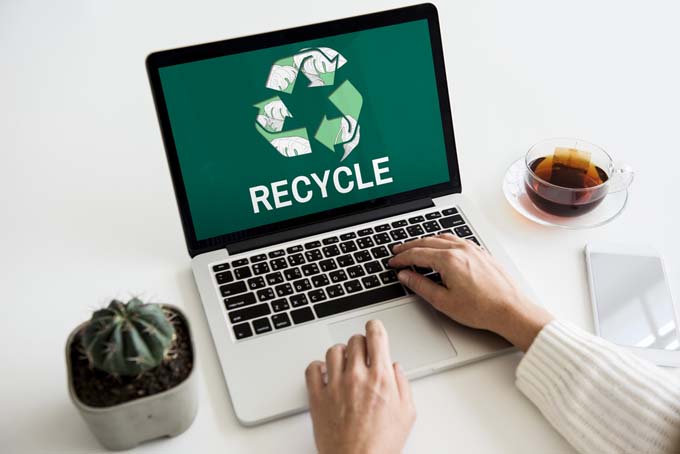Sustainable pressure equipment as a means of combating global warming
The industrialized countries in particular are responsible for a large percentage of the CO2 gases that are considered harmful. In a global comparison, not only factories and the manufacturing industry are responsible, but also traditional office buildings. Computers, telephones and printers consume a lot of electricity. However, quite a bit of energy can be saved here, for example with appropriate economy modes on the devices or the general reduction of consumables.

more efficient than laser printers. (Image: Depositphotos.com)
The threat of climate change continues to grow, and with each passing year it seems more real. All over the world, people are stepping up their efforts to mitigate or even prevent this looming catastrophe. Even in times of economic or energy crises, climate change does not lose importance in many considerations. The industrialized countries in particular cause a large percentage of the CO2 gases that are considered harmful. In a global comparison, not only factories or the manufacturing industry are responsible, but also classic office buildings. Computers, telephones and printers consume a lot of electricity. However, quite a bit of energy can be saved here, for example with appropriate economy modes on the devices or the general reduction of consumables. "New devices usually come up trumps with a better eco-balance and thus bring along oodles of savings potential. Even a complete switch from laser printers to inkjet printers can cut the emissions generated during the printing process by almost half," explains Tanja Schmidt, Managing Director of igreeen solution GmbH and expert for technical office equipment.
Possible step towards climate neutrality?
Sustainability as a core issue has long since reached all industries. Increasing demands from customers, employees and politicians are ensuring that companies make themselves and their processes more climate-friendly. In this context, Germany, for example, has set itself the goal of reducing the greenhouse gases it produces by 80 to 90 percent by 2050 compared with 1990 levels. With this overarching goal of net zero, the German government wants to achieve its environmental targets and come a big step closer to the planned climate neutrality in the wake of the 1.5-degree target. However, this requires a strict compensation policy as well as a steady reduction in energy consumption. Schmidt clarifies: "Ongoing sustainability efforts by companies, such as the switch to more economical and healthier equipment, make a decisive contribution here. At around a quarter of total consumption, electrical appliances in the home and office do not prove to be the biggest consumers of electricity, but the increasing ownership of a wide variety of devices means that individual consumption must nevertheless be drastically reduced. Economical inkjet printers can quickly reduce demand by a large proportion."
Efficient device management
At first glance, the move to more sustainable printing appears to have little direct impact on the path to climate neutrality and the future of the planet. But according to estimates, printers of all kinds alone cause almost 2.5 tons of CO2 and consume around 4,500 gigawatt hours of electricity per year (Source: https://epsonemear.a.bigcontent.io/v1/static/Epson-HeatFreeReport-German_final). Based on precise data, researchers can state that inkjet printers are approximately 90 percent more efficient than laser printers. According to a study by Epson and the University of Cambridge, there is thus the possibility of saving up to 1.3 million tons of CO2. "This shows that net zero by 2050 in terms of printers is definitely possible if energy-efficient technology is used more in homes as well as businesses. Some manufacturers are even already working here with special printing processes that manage completely without heat. This reduces the power consumption required and at the same time also the greenhouse gas emissions that are produced," says Schmidt. By switching to modern inkjet printers, private individuals and companies can significantly reduce their CO2 emissions and make a decisive contribution to the fight against climate change.
Source: www.igreeen.de









